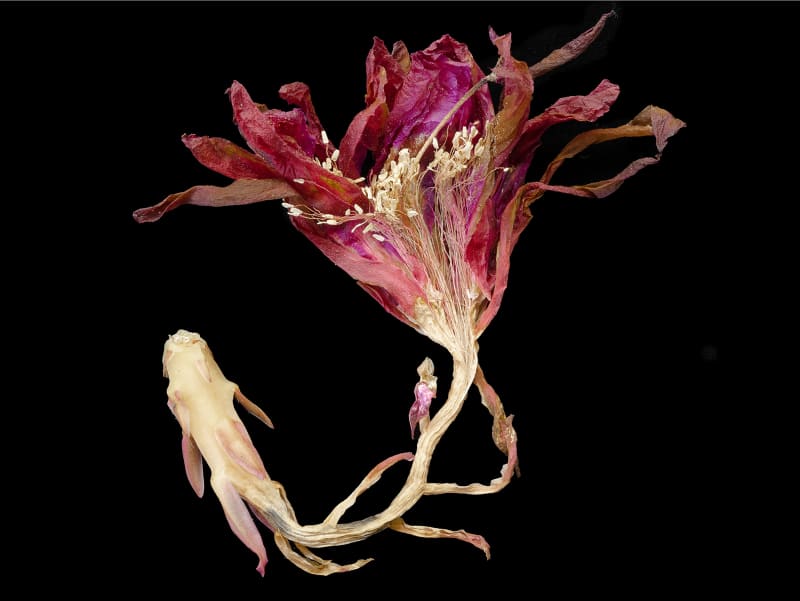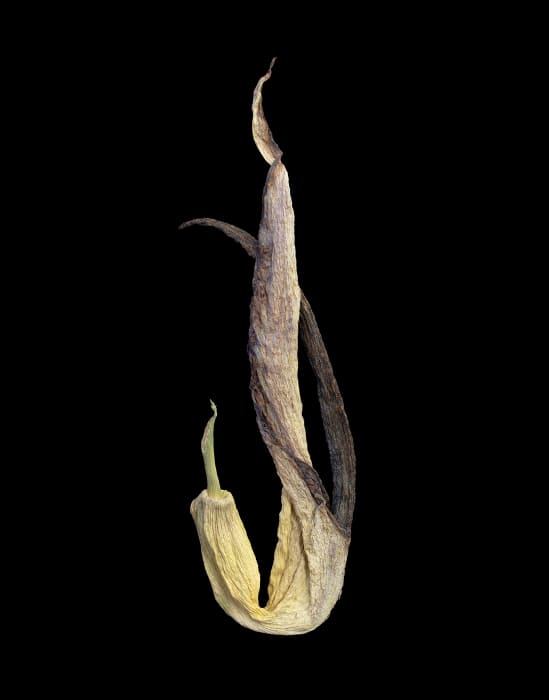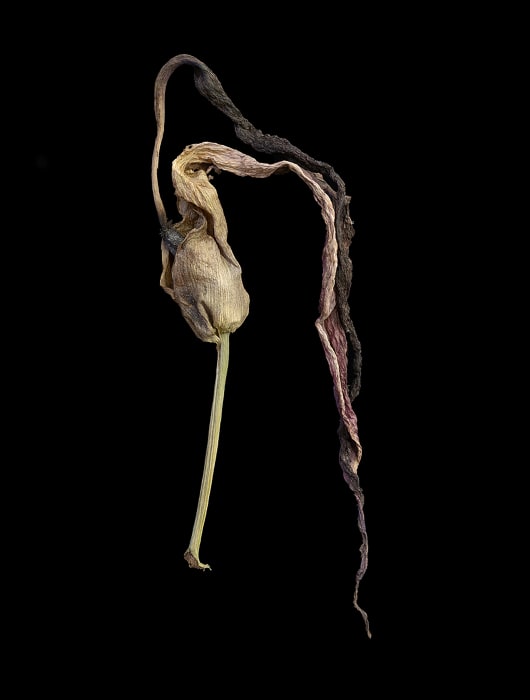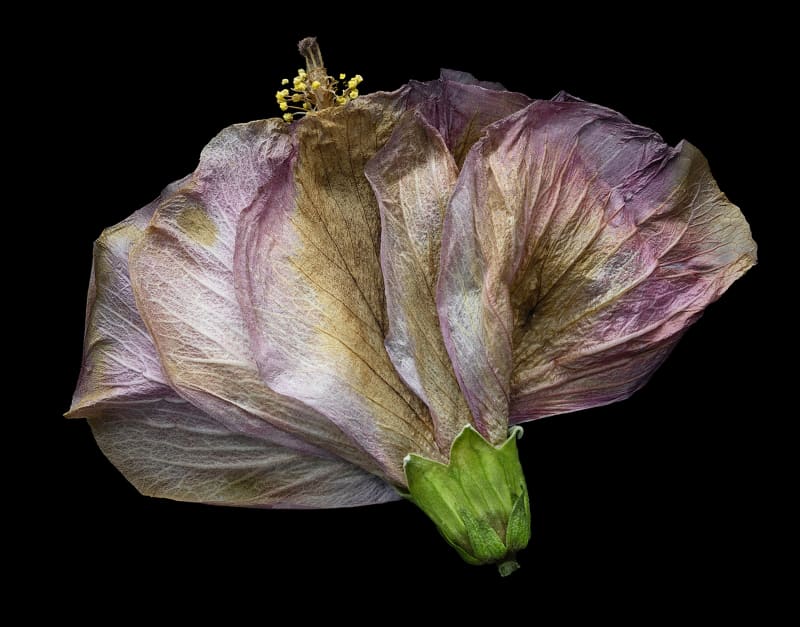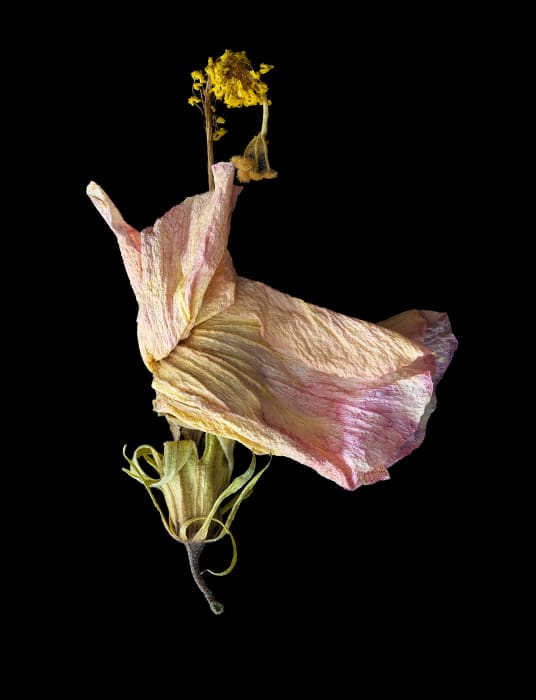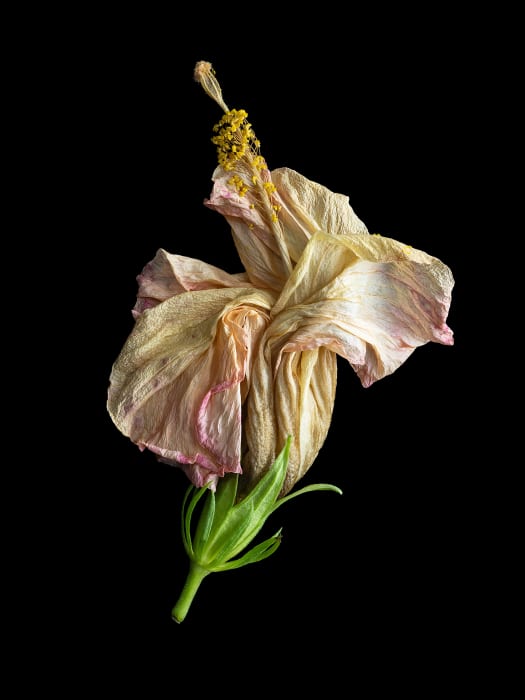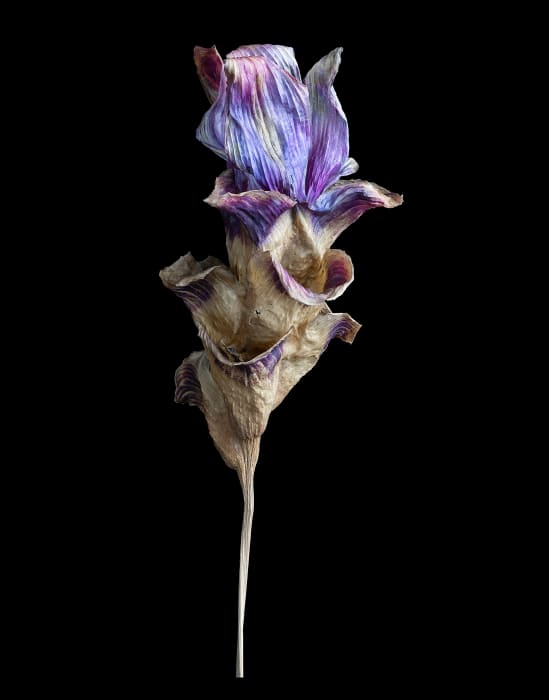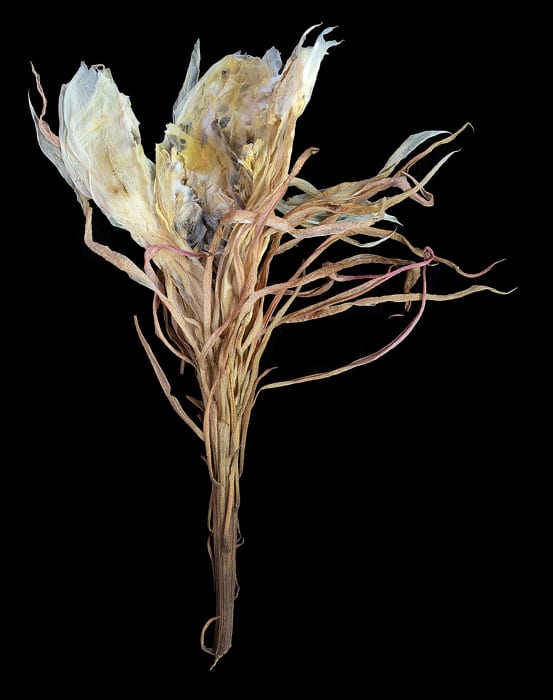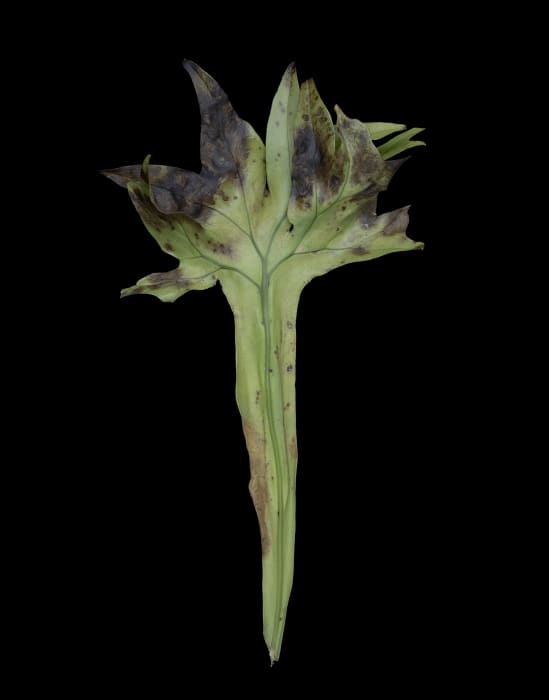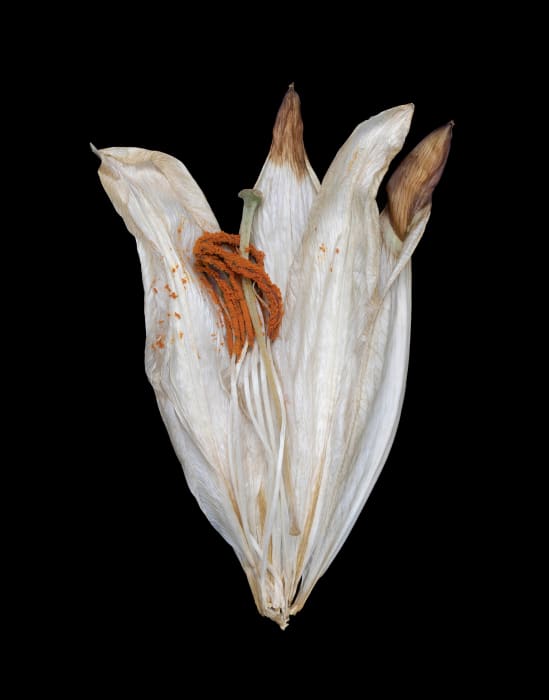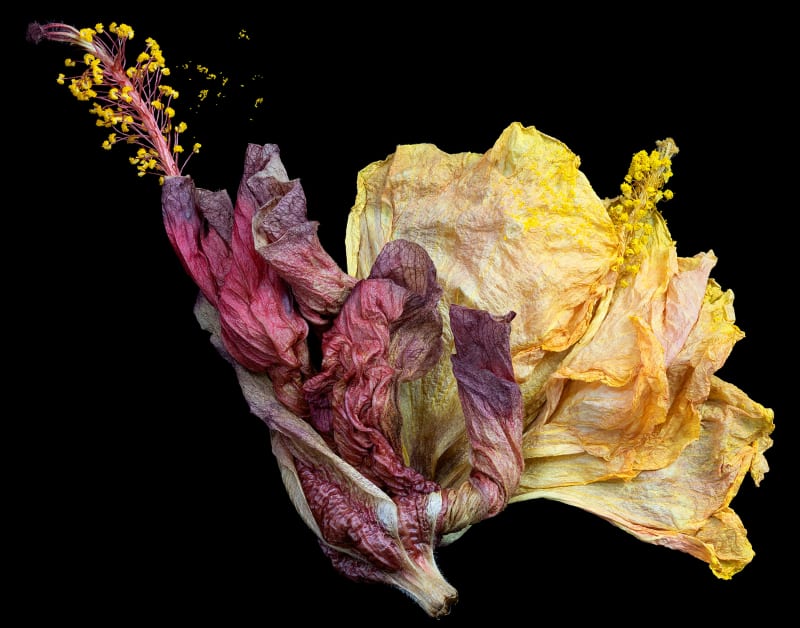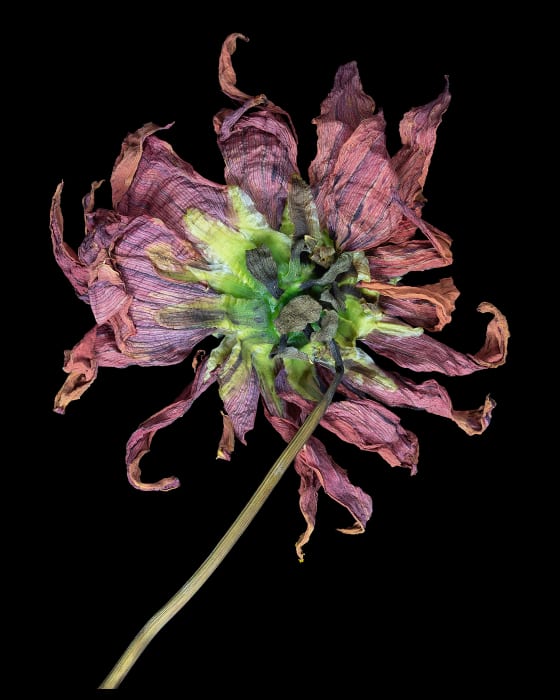Wabi-sabi…a world view centered on the acceptance of transience and imperfection; an aesthetic sometimes described as one of beauty that is ”imperfect, impermanent, and incomplete”.
My long-term interest in landscape, urban landscape, land usage, regeneration and man’s effect on the land continues to influence my visual ideas. Transitory States references this interest through the making of images documenting the life cycle of plants. Certain flowers last only a day (or night) before beginning to age and die. This process of discovering the visual beauty of the aging flowers applies to all stages we humans pass through as we age.
Counter to the normal expectation of “beautiful color”, these faded, muted tones instead directs the viewer to consider the life cycle emphasizing the notion of all life cycles in our world with the longest, that of our universe and the shortest, the adult female mayfly, living for merely five minutes. Everything else cycles somewhere between the two. The flower is ever changing as it fades, dries and may begin to grow mold.
I employ 50 & 100 megapixel medium format cameras, macro lens, and controlled lighting, while isolating the subject against black velvet. “Stack focus” allows the final image focus to encompass the entire object with crispness and detail. The number of frames exposed have recently reached each nearly 100. Each frame very slightly adjusts the focus to just a bit further away. As the focus distance changes the magnification also changes requiring adjustments through Adobe Photoshop. The files are aligned, masked for sharpest area, stacked together and then flattened to a single image. Original plant pieces may be as small as 3” and I sometimes print as large as 40” x 60”.
